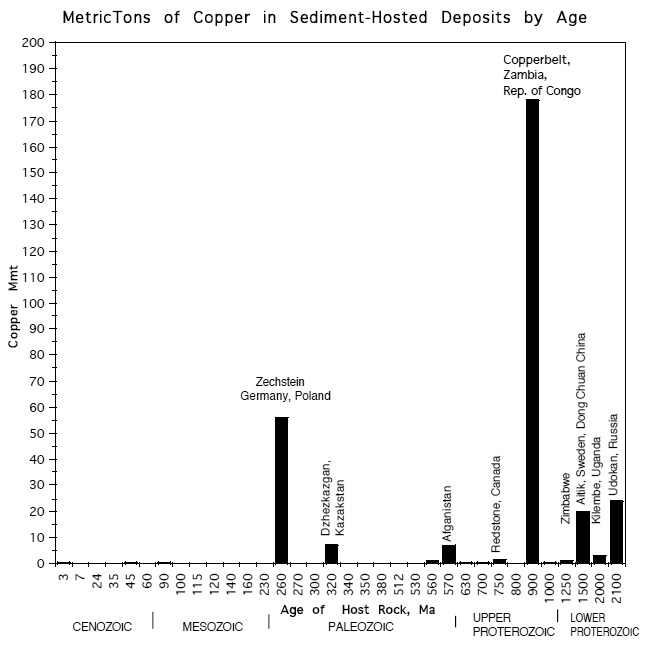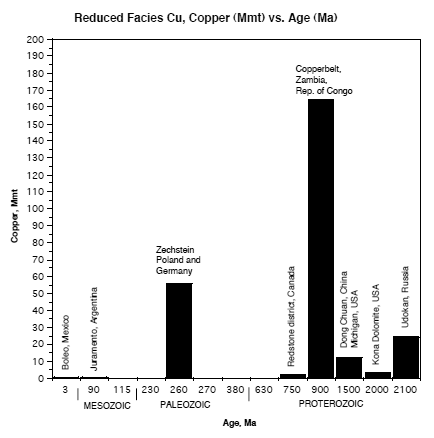
Figure 1. Distribution of copper metal (Million metric tons) in deposits of different ages.



USGSによる『Sediment-Hosted Copper Deposits of the World: Deposit Models and Database』から
Introduction
This publication contains four descriptive models and four
grade-tonnage models for sediment hosted copper deposits. Descriptive
models are useful in exploration planning and resource assessment
because they enable the user to identify deposits in the field
and to identify areas on
geologic and geophysical maps where deposits could occur. Grade
and tonnage models are used in resource assessment to predict
the likelihood of different combinations of grades and tonnages
that could occur in undiscovered deposits in a specific area.
They are also useful in exploration
in deciding what deposit types meet the economic objectives of
the exploration company. The models in this report supersede the
sediment-hosted copper models in USGS Bulletin 1693 (Cox, 1986,
and Mosier and others, 1986) and are subdivided into a general
type and three subtypes. The general model is useful in classifying
deposits whose features are obscured by metamorphism or are otherwise
poorly described, and for assessing regions in which the geologic
environments are poorly understood. The three subtypes are based
on differences in deposit form and environments of deposition.
These differences are described under subtypes in the general
model.
Deposit models are based on the descriptions of geologic environments
and physical characteristics, and on metal grades and tonnages
of many individual deposits. Data used in this study are presented
in a database representing 785 deposits in nine continents. This
database was
derived partly from data published by Kirkham and others (1994)
and from new information in recent publications. To facilitate
the construction of grade and tonnage models, the information,
presented by Kirkham in disaggregated form, was brought together
to provide a single grade and
a single tonnage for each deposit. Throughout the report individual
deposits are defined as being more than 2,000 meters from the
nearest adjacent deposit.
The deposit models are presented here as a PDF file. The database
can be most conveniently read in FileMaker Pro. For those who
do not have the FileMaker application, Microsoft-Excel, tab-delimited-ASCII
and comma-separated-value files are included. The reader may be
interested in a similar publication on porphyry copper deposits
(Singer and others, 2005) also available online.
The Google Earth image is not intended to be viewed at the highest
possible magnification because the resolution of the database
is plus or minus two kilometers. At extreme zoom settings, the
deposit locations may not coincide with the Google-Earth images
of the mine workings.
The authors wish to thank William F. Cannon for his thoughtful
review of this report.
 Figure 1. Distribution of copper metal (Million metric tons) in deposits of different ages.    USGSによる『Sediment-Hosted Copper Deposits of the World: Deposit Models and Database』から |